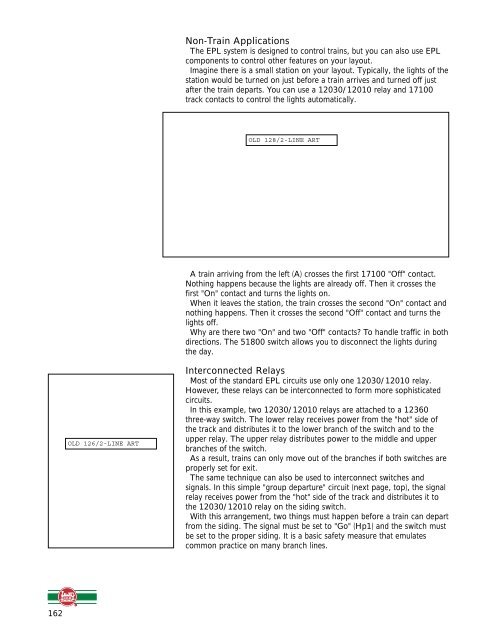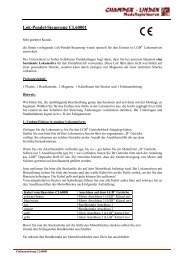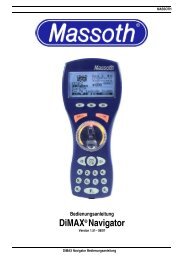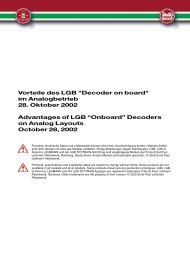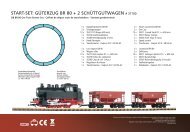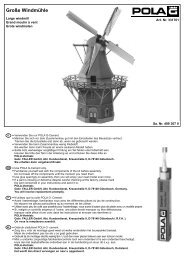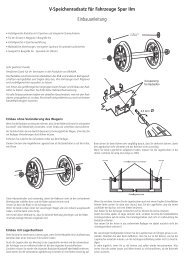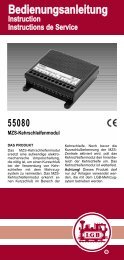00559 Interim PDF Edition - Champex-Linden
00559 Interim PDF Edition - Champex-Linden
00559 Interim PDF Edition - Champex-Linden
Create successful ePaper yourself
Turn your PDF publications into a flip-book with our unique Google optimized e-Paper software.
162<br />
OLD 126/2-LINE ART<br />
Non-Train Applications<br />
The EPL system is designed to control trains, but you can also use EPL<br />
components to control other features on your layout.<br />
Imagine there is a small station on your layout. Typically, the lights of the<br />
station would be turned on just before a train arrives and turned off just<br />
after the train departs. You can use a 12030/12010 relay and 17100<br />
track contacts to control the lights automatically.<br />
OLD 128/2-LINE ART<br />
A train arriving from the left (A) crosses the first 17100 "Off" contact.<br />
Nothing happens because the lights are already off. Then it crosses the<br />
first "On" contact and turns the lights on.<br />
When it leaves the station, the train crosses the second "On" contact and<br />
nothing happens. Then it crosses the second "Off" contact and turns the<br />
lights off.<br />
Why are there two "On" and two "Off" contacts? To handle traffic in both<br />
directions. The 51800 switch allows you to disconnect the lights during<br />
the day.<br />
Interconnected Relays<br />
Most of the standard EPL circuits use only one 12030/12010 relay.<br />
However, these relays can be interconnected to form more sophisticated<br />
circuits.<br />
In this example, two 12030/12010 relays are attached to a 12360<br />
three-way switch. The lower relay receives power from the "hot" side of<br />
the track and distributes it to the lower branch of the switch and to the<br />
upper relay. The upper relay distributes power to the middle and upper<br />
branches of the switch.<br />
As a result, trains can only move out of the branches if both switches are<br />
properly set for exit.<br />
The same technique can also be used to interconnect switches and<br />
signals. In this simple "group departure" circuit (next page, top), the signal<br />
relay receives power from the "hot" side of the track and distributes it to<br />
the 12030/12010 relay on the siding switch.<br />
With this arrangement, two things must happen before a train can depart<br />
from the siding. The signal must be set to "Go" (Hp1) and the switch must<br />
be set to the proper siding. It is a basic safety measure that emulates<br />
common practice on many branch lines.


